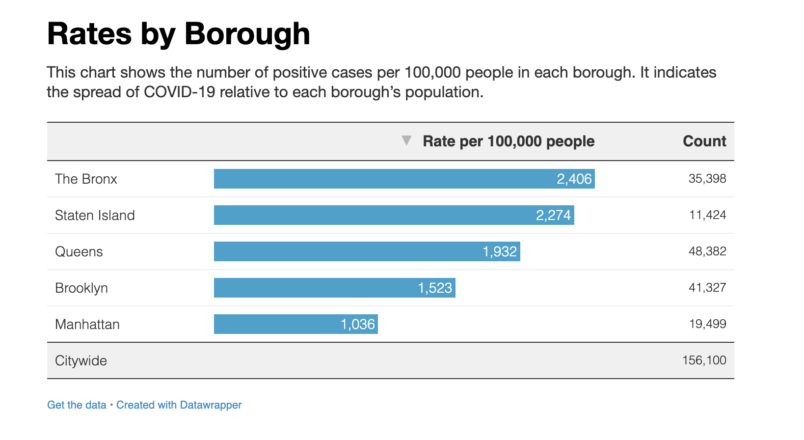In a widely-read column in The New York Post the Chair of Emergency Medicine at St Barnabas Hospital in the Bronx says it’s time to reopen the city. Though I disagree with him, as someone who has worked in an emergency room through the crisis and contracted COVID19 himself, Daniel Murphy has plenty of standing to share his opinion. I note the piece for a more particular reason though. Murphy says that 43% of Bronx residents have been infected with COVID19. He doesn’t say where he gets that number and he doesn’t say explicitly that he’s talking about antibodies testing. But context makes the latter point pretty clear and he must be drawing this from the serology testing the state has been doing over the last two weeks.
As far as I know the state hasn’t released any borough by borough breakdown of the numbers. But a head of emergency medicine at a frontline hospital in the Bronx would likely have access to that data. And the number, though eye-popping, is not implausible based on the data we have.
Yesterday Gov. Cuomo reported that 24.7% of New York City residents had COVID19 antibodies after a second week of testing. But as the lowest income borough the Bronx must have a very high concentration of essential workers. There’s the least ability to get out of the city. There’s all issues tied to heavier concentrations of people, multigenerational homes. And the hard numbers back this up: According to the latest city data, on a per capita basis the Bronx has almost 2.4 times the number of positive tests for current illness (so the active infection rather than the serology tests). You can see that Staten Island is second highest. But Staten Island is by far the smallest borough by population.
There’s no way reverse engineer these numbers to see if the Bronx comes out to 43%. They’re different kinds of tests. The serology tests are supposed to be random and weighted whereas the infection tests are affected by all sorts of non-random factors. But given population breakdowns and all the factors we know, 43% seems entirely plausible. If that turns out to be the case it is a remarkable, harrowing number.






